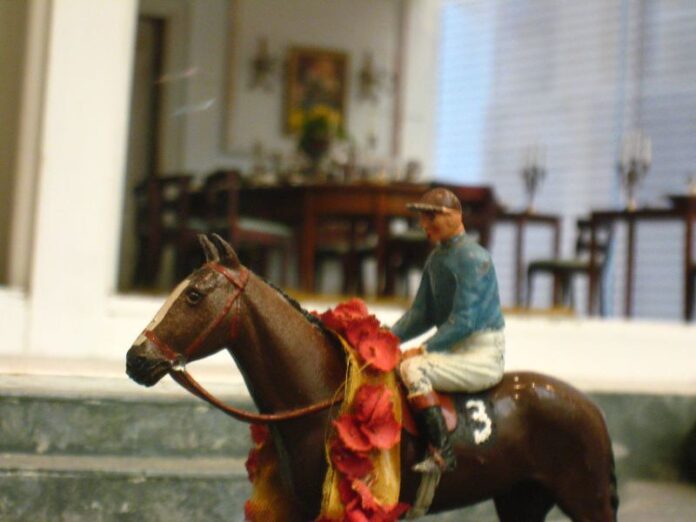Author: Lindsay Griffin
The Kentucky Derby is the oldest continually run sporting event in the United States.
It predates the Super Bowl. It predates the World Series. It predates anything related to the NBA. It not only predates televised sports, it predates radio broadcast sporting events.
Just how old is the Kentucky Derby?
It was first run in 1875 and at the time the Kentucky Derby length was 1.5 miles. Since there has been a Kentucky Derby every year since, without fail, this year we will celebrate our 149th running.
The World In 1875
The world has changed a lot in the past century and a half. In 1875, horses were not only run for our entertainment, but they were also our main mode of day-to-day transportation. The Industrial Revolution was a few years away.
Queen Victoria was in the middle of her reign of the British Empire, and United States President Ulysses S. Grant was in his second term in the White House (which was not even known as the White House at the time, having been dubbed such during Theodore Roosevelt’s presidency).
The United States itself was still recovering from the effects of the Civil War, which had ended only ten years before. In addition, slavery had only come to a close during the time of the war. Nearly all Black adults in the southern portion of the United States- including many of the jockeys who would ride in the initial Kentucky Derby- were enslaved at the time of their birth.
The First Kentucky Derby
The race was developed by a man named Meriwether Lewis Clark, head of the Louisville Jockey Club (the racing establishment that would eventually be known as Churchill Downs). He designed the Kentucky Derby and Kentucky Oaks to mimic England’s Classic races, the Derby Stakes and the Oaks Stakes, and also developed the Clark Handicap for older horses.
The first winner of the Kentucky Derby was Aristides, a front-running colt by Leamington out of Sarong (by Lexington) who was generally believed to only be entered as a race to set the pace for his highly regarded stablemate, Chesapeake. Chesapeake, however, was “vicious” at the start and ran dully, eventually finishing eighth; owner/breeder H. Price McGrath, who had initially given orders to let Chesapeake win, signaled mid-race for Aristides to go on and take the race if he could. Aristides was ridden by Oliver Lewis and trained by Ansel Williamson.
The initial Kentucky Derby was run over a distance of 1 ½ miles, the distance of the Derby Stakes and the modern distance of the Belmont Stakes. The starting line was marked in the dirt of the track (web barriers and starting gates were yet to be invented), and most of the jockeys rode with relatively long stirrups (at least as compared to the modern jockeys’ crouch, popularized by jockey Willie Simms in the 1890s).
Bets were taken by bookmakers, who set their own odds. Times were taken by hand and judges placed at the finish line decided close races, often calling a dead heat for races that would be easily decided by a photo finish camera today.
What About The Modern Kentucky Derby?
Today’s Kentucky Derby is far different. Far from being a novelty, the Kentucky Derby is the centerpiece of racing for American three-year-olds. The race is so popular that a points system was developed to eliminate less qualified horses.
The race also uses a specialized starting gate, able to accommodate more horses (twenty) than any other in use in the country. Top trainers can spend years developing Derby contenders, and nearly every North American Thoroughbred has at least one Kentucky Derby winner in the first four generations of their pedigree.
The race itself has also changed. The distance was shortened to 1 ¼ miles in 1896. The splits and final times are recorded digitally and can be measured to a hundredth of a second.
As mentioned before, photo finish cameras can now decide tight races, but instant replays at multiple angles are now available instantaneously, so the racing stewards can investigate any jockey’s claims of foul.
This led to Maximum Security’s controversial disqualification in 2019, when stewards determined he interfered with multiple other horses coming out of the far turn- something that most likely would never have happened in the days before that technology.
































































